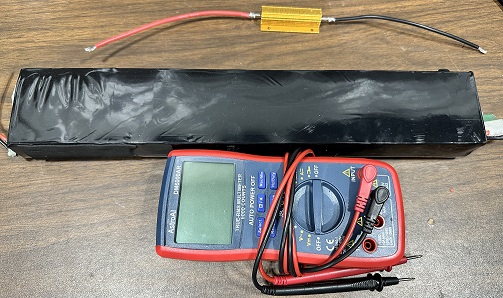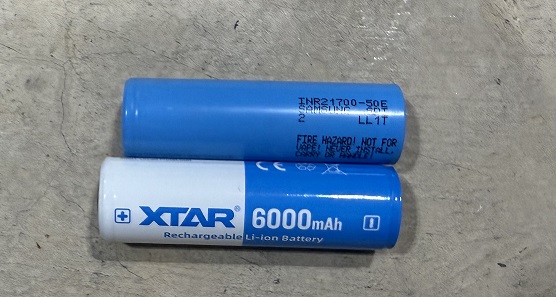
What Is The Most Accurate Way To Test A Battery?
Table of Contents
Using a multimeter with a fixed resistance load is the most accurate method to test a battery's health because with those things you can assess the battery’s voltage, its resistance, its temperature, and thus how it will behave under a given load.
The ISR or Internal Series Resistance is arguably the most important metric when it comes to any battery or other power source. If a battery has a high internal resistance, its voltage will drop a lot more than a battery with a lower resistance.
How to Accurately Test a Battery Using Internal Resistance (IR)
One of the essential factors that determine a battery's health, efficiency, and performance is its internal resistance (IR). By understanding and measuring a battery's internal resistance, one can gauge the potential voltage drop under load and the power that the battery can effectively deliver.
Understanding Internal Resistance
When you draw current from a battery, its voltage tends to drop due to its internal resistance. The greater the voltage drop caused by higher internal resistance the worse the battery will perform. It's good to measure when you buy the battery pack in its new state and periodically check from time to time. This will show you the trend downward in voltage drop and the increase in resistance. You can use a formula to calculate internal resistance to apply it to the procedure below.
Ohm's Law determines the magnitude of this drop: ΔV=I×R
Where:
- ΔV is the voltage drop
- I is the current drawn
- R is the internal resistance of the battery.
With a 200mOhm resistance and a 30 amp load, the voltage drop is
30A×0.2Ω=6V
30A×0.2Ω=6V. So, a 48V battery would drop to 42 volts.
With a 100mOhm resistance and the same 30 amp load, the voltage drop is
30A×0.1Ω=3V
30A×0.1Ω=3V. This would result in a drop to 45 volts for a 48V battery.
Knowing the above portion you can go even deeper to understand the efficiency of your battery pack at a given load. With this information, you can test and simulate the performance of your battery pack to decide its health relative to your uses for it.
If you want to know more about how to measure Internal Series Resistance with a multimeter, then check out our article on that topic here. Alternatively, you can purchase an IR tester shown below.
[[ aff type=aff ~ link=https://amzn.to/3JAaOT5 ~ title=`YR1035+ 4 Line IR Tester ` ~ image=https://admin.cellsaviors.com/storage/yr1035 ir tester.jpg ~ description=`` ~ height=small ~ buttonText=`Check Price` ]]
What Is The Most Accurate Method Of Testing A Battery?
When it comes to determining the health of a battery, several testing methods exist. Among these, the most common are voltage testing, resistance testing, capacity testing, and load testing. Unfortunately, the most accurate way to determine if a battery has gone bad and overall battery health would be to use all three tests: Voltage, Load, and Resistance.
Voltage Testing: This method entails using a device called a multimeter that measures the electrical potential difference, or voltage, between the battery's two terminals. A healthy, fully charged 12V car battery, for instance, will typically display a voltage of around 12.6V to 12.8V. If the voltage reading is significantly lower, it suggests the battery is discharged or potentially unhealthy. Things like a bad BMS or a BMS that has gone into safe mode because series group voltages have grown too far apart.
Load Testing: Unlike the voltage test that measures static voltage, the load test evaluates how well a battery can maintain voltage under load. This is achieved by running a load and measuring its current while observing voltage drop.
Resistance Testing: This testing method involves the use of an ohmmeter, a type of multimeter, to measure the electrical resistance within the battery. A battery's resistance should ideally be very low, close to zero, between 20 and 50 mOhms. However, as batteries age or become faulty, their internal resistance increases. A high internal resistance can cause a battery to not deliver power effectively, even if it shows an adequate voltage when not under load. If you don't have an ohmmeter you can test internal resistance with a multimeter it just requires some math and a resistor.
Pros and Cons of Each Battery Testing Method
Voltage Testing: This method is simple, quick, and requires just a multimeter, making it a readily accessible means to check battery health. However, its primary downside is that it only provides a 'snapshot' of the battery's condition and does not evaluate its performance under load, which can lead to a false sense of security about the battery's health.
Load Testing: Load testing provides a more comprehensive understanding of the battery's health, simulating the conditions the battery would face while in use. It's a better indicator of the battery's capacity to perform when needed. The downside is that it can be more complex and time-consuming than voltage testing.
Resistance Testing: Resistance testing offers the most insight into the condition of the battery's internal components, which can be especially valuable for detecting aging or faulty batteries. Since it examines the internal resistance, it may reveal problems that are not evident in voltage or load testing. On the downside, it’s the most involved test that requires the most time and the most parts.
Importance of Regular Battery Testing
Regular battery testing is crucial for several reasons. First of all, it allows for the early detection of potential battery problems, helping to prevent unexpected failures. Secondly, it extends the overall lifespan of a battery by maintaining its efficiency. Finally, regular battery testing aids in understanding when a battery is nearing the end of its life, thus aiding in planning for its replacement.
Frequent testing can also save money in the long run, as it helps to prevent damage to other electrical components that could occur if an unhealthy battery is left unchecked. It also avoids inconvenience due to unexpected battery failures.





